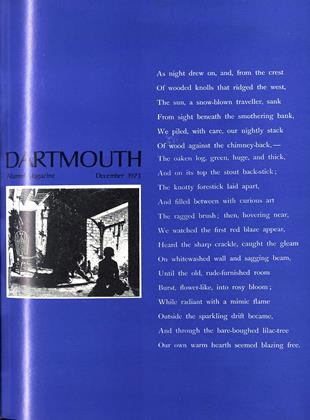RENAL FUNCTION: MECHANISMS PRESERVING FLUID AND SOLUTE BALANCE IN HEALTH.
December 1973 ROY P. FORSTERRENAL FUNCTION: MECHANISMS PRESERVING FLUID AND SOLUTE BALANCE IN HEALTH. ROY P. FORSTER December 1973
By Heinz ValtinM.D. (Professor of Physiology, DartmouthMedical School). Boston: Little, Brown andCompany, 1973. 253 pp. Hardbound $12.50.Softbound $7.50.
Life originated in the sea. Complexly organized animals, as they emerged from their marine environment, have in a sense trapped within themselves a vestige of the paleozoic ocean whence they came. As has been pointed out by Claude Bernard, the famous 19th-century French physiologist, this milieu interieur comprising blood and lymph is the true environment in which cells actually live. Maintaining the stability of this inner environment, particularly its salt and water content, is a prime factor for insuring health. Constancy is maintained by energy-demanding processes that continually compensate for and counterbalance those challenges in the external environment that threaten to disturb it. John Masefield, former Poet Laureate of England, expressed this fundamental principle precisely:
"What am I, Life? a thing of watery salt, Held in cohesion by unresting cells . . . ?"
Dr. Heinz Valtin's textbook effectively presents the basic renal mechanisms that function in health to preserve fluid and solute balance. It provides the learning experience that is absolutely essential for the medical student later to understand and treat effectively "dislocations and perturbations" of this vital parameter that may occur in the diseased or disabled patient.
Dr. Valtin's effort is in accordance with the tradition of others in this field such as J. L. Gamble, Homer W. Smith and Robert F. Pitts, who during the full flood of their research productivity took time out to think of their students and provide them with masterful texts.
The book is tersely written, but a carefully chosen bibliography at the end of each chapter provides a student with access to classic con- tributions of historic importance, to original experiments, and to key review articles. Problemsolving, clear and informative figures, and some striking photomicrographs serve effectively to augment Valtin's clear and straightforward exposition.
Topics are presented . along classical clearance" lines that follow the monumental discoveries in renal physiology made by E. K. Marshall Jr., Homer W. Smith, and their students during the decade of the thirties. Results of contemporary micropuncture studies are introduced, however, with the authority and effectiveness that one would expect from Dr. Valtin, who has used these refined techniques himself to make significant contributions, particularly to our understanding of renal concentration and dilution mechanisms.
The book is handsome; it is carefully edited, with an attractive format; and it has a nice "feel" about it. No medical student is likely to have it far out of reach when, during his advanced training, he must apply these basic renal principles to solve clinical problems related to the management of fluid and electrolyte balance.
Mr. Forster is the Dartmouth Ira AllenEastman Professor of Biology and Lecturer inPhysiology at the Dartmouth Medical School.
 View Full Issue
View Full Issue
More From This Issue
-
 Feature
FeatureWHY COLLEGE ?
December 1973 -
 Feature
FeatureWatergate and the Press
December 1973 By H. WILLIAM SHURE -
 Feature
FeatureMiSSING IDOL:KOM AGAIN?
December 1973 By MICHAEL STUART '71 -
 Feature
FeaturePoet of Place
December 1973 By R.B.G. -
 Article
ArticleBig Green Teams
December 1973 By JACK DEGANGE -
 Article
ArticleMILLETT G. MORGAN
December 1973 By R.B.G.
ROY P. FORSTER
Books
-
 Books
BooksArt in the Era of Alexander the Great
July/August 2011 -
 Books
BooksFILM IN THE THIRD REICH.
JANUARY 1970 By J. BLAIR WATSON JR. '21h -
 Books
BooksIdiocy and Fantasy
JAN./FEB. 1979 By J. D. O'HARA '53 -
 Books
BooksCOMMUNICABLE DISEASE CONTROL,
March 1942 By Rolf C. Syvertsen, M.D. '18 -
 Books
BooksGREEK PLAYS IN MODERN TRANSLATION,
December 1947 By ROYAL CASE NEMIAH. -
 Books
BooksSTANISLAS KONARSKI, REFORMER OF EDUCATION IN XVIIIth CENTURY POLAND
AUGUST 1929 By W. R. W.




